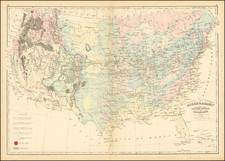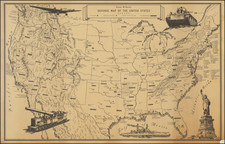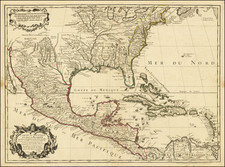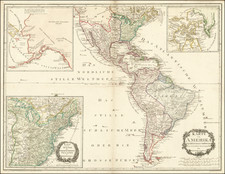Nice example of William Chapin's famous Ornamental Map of the United States published W. Chapin and J.B. Taylor and sold by T & E.H. Ensign.
The main portion of the map covers the United States to just west of the Mississippi. The decorative elements for which the map is named include corner views of Baltimore, Boston, New York, and Philadelphia. Surrounding the map are portraits of the presidents up to James K. Polk.
The includes the following insets:
- The Western Territory of the United States.
- Texas
- The Canadas Nova Scotia N. Brunswick & Newfoundland
- The North Part of Maine
- South Part of Florida
- British Possessions of North America
- Colombia
- The World
- West Indies
Editions
P-Maps page 892 lists an edition of 1839, presumed to be the first edition. And Rumsey (2128) notes that the map was published up to 1853. The map, in fact, was published up to 1865.
As the editions of the map progressed more portraits were added to the border and the insets were changed.
William Chapin (1802-1888) was a well-regarde engraver based in New York and Philadelphia during the early 19th century.
Chapin began as an apprentice to John Vallance in the Philadelphia firm Tanner, Vallance, Kearny & Company in 1817. This firm was renowned for its extensive cartographic work, including Tanner's early maps and atlases. Chapin purchased his freedom from Vallance for $125 in 1822.
Following his apprenticeship, Chapin established opened in own printimng business. His large Ornamental Map of the United States, which is considered the first American-published map to be engraved on steel. This innovation marked a significant advancement in the precision and durability of mapmaking.
Around 1839, Chapin transitioned from engraving to a role as Commissioner of Public Schools in New York. This career change marked the beginning of his deep involvement in education, particularly focusing on teaching blind children.
Chapin's most impactful work occurred at the Overbrook School for the Blind, where he made significant strides in educational methods for the blind. He published the first dictionary for the blind, a pioneering work that facilitated better communication and learning for visually impaired students. Chapin's contributions to both the fields of cartography and education for the blind have left a lasting legacy, reflecting his versatility and commitment to improving societal resources through his various roles.











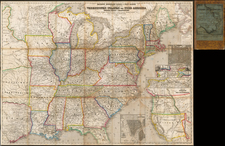
![[German Northern Pacific Promotional Tract] Die Nordliche Pacific Eisenbahn; Ihre Route, hulfsquellen, fortschritte & Gefchafte. der neue Nord-Westen und seine grosse Verkehrs-Strasse.](https://storage.googleapis.com/raremaps/img/small/83777.jpg)
